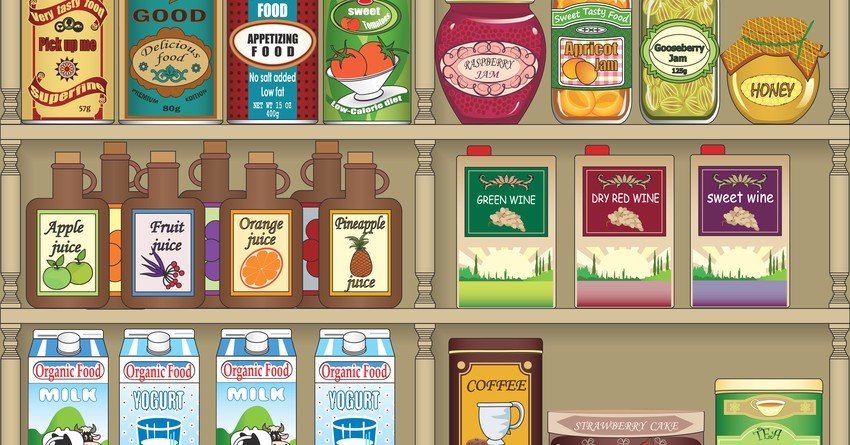
With household items like milk or butter, branding and packaging tends not to stray too far from well-known designs and shapes, as to not alienate the audience.
But Anchor has decided to diverge from the norm and teamed up with Colenso BBDO to release a black milk bottle in support of the All Blacks.
Sure, the nation is almost guaranteed to embrace it as it has the almighty marketing power of the All Blacks behind it, but it’s a bold move.

It was a just a couple of years ago that Anchor copped a lot of flack for changing its milk bottle design to be lightproof, with milk levels invisible from the outside.
It was entirely new territory for milk drinkers, as they’d always been able to see the milk in transparent bottles.
A poll at the time by the NZ Herald revealed many were against to the change, with 78 percent of the 16,600 respondents saying the bottles were a waste of time and that the old containers were fine. Just 13 percent thought they were an innovation.
But despite the outrage, there was still a 10 percent increase in sales in the first month, showing humans can be an irrational species when it comes to change.
Dow Design group account director Simon Wedde says Anchor’s switch to lightproof bottles paid off.
“The reality is, it did improve sales and gave Anchor a point of difference,” he says.
“It’s led to a sustained point of difference and consumers have a good understanding about it now and how it protects the milk.”
Anchor’s been at the forefront of product redesign. Prior to the lightproof bottles, it completely changed its milk bottle shape in 2002.
It swapped the traditional square shape for a curved bottle and added cow illustrations to its logo.

Though seen as risky, Wedde says there was a 30 percent growth in sales at the launch without any advertising.
He credits this to better ergonomics (it made it easier to hold and pour) and because there was more personality brought to the bottles by using animal illustrations.
“It was taking a simple product and injecting it with some emotion and personality,” he says.
Fresh’n Fruity also rebranded in 2009.
At the time, Wedde says, most yoghurt brands’ packaging put the primary focus on flavour.
To stand out, they turned it on its head and made the Fresh’n Fruity brand prominent – more so than the yoghurt flavour.
At the time of the rebrand, there was immediately a 12 percent growth in sales volume at without any advertising.
Simply Squeezed also got a fresh new look from Dow Design.
After researching what customers saw on the juice aisle, Wedde says they noticed every juice brand was doing the same thing.
“It was a race for who can become the most boring. Everyone was shouting, ‘I’m the purest, I’m not from concentrate,’ but if you keep shouting about a functional story you are commoditising it. What value are you adding?” he says.
They decided to take the design back to being about juice being fun and exciting with a redesign that didn’t feature any clichéd oranges or leaves.

There isn’t any sales data Dow Design can release, but Wedde says the client is happy with the results.
“It’s finding a way of talking about the product that is a point of difference – it doesn’t have to be unique but it has to be relevant – and I think that’s what Simply Squeezed did. There was a lot of talk about purity and fruit in the market, but I drink juice for pleasure, as there’s a lot of joy in the juices and the flavours. I’m going to respond to that.”
So is there a connection between branding with a point of difference and sales increasing?
Wedde says with a redesign, you should see a strengthening of the brand.
“I think when it comes to design and pack design, particularly in supermarkets with consumer packaged goods, there is a direct correlation. You will either see a sales volume increase or less reliance on price promotion,” he says.
If a company hits the nail on the head, packaging-wise, he says this will also lead to a price premium.
But there’s a fine line between innovating a product and staying current to the consumer, he says.
“You can stand out by breaking all the norms and conventions and being unique, but unless that’s relevant to the consumer and true to the product it won’t really work.”
In order to stay relevant, he says companies should look for product truths and what they’re doing differently.
Truth is the key word, as Wedde says consumers will eventually work it out if a company’s brand is pretending to be something its not.
“The packaging and the brands that succeed are the ones that are focused and have an emotional connection with consumers,” he says.
He says Whittaker’s chocolate packaging is a great example of this. Its beautifully crafted letters and gold packaging are visual cues that tell an emotive story – it’s crafted, it’s made by a family in Wellington and it uses premium ingredients.

“Be authentic, have a personality and be emotive about it, don’t try to be too rational. It does deliver results if you get it right,” he says.
—
This article originally appeared on The Register.




